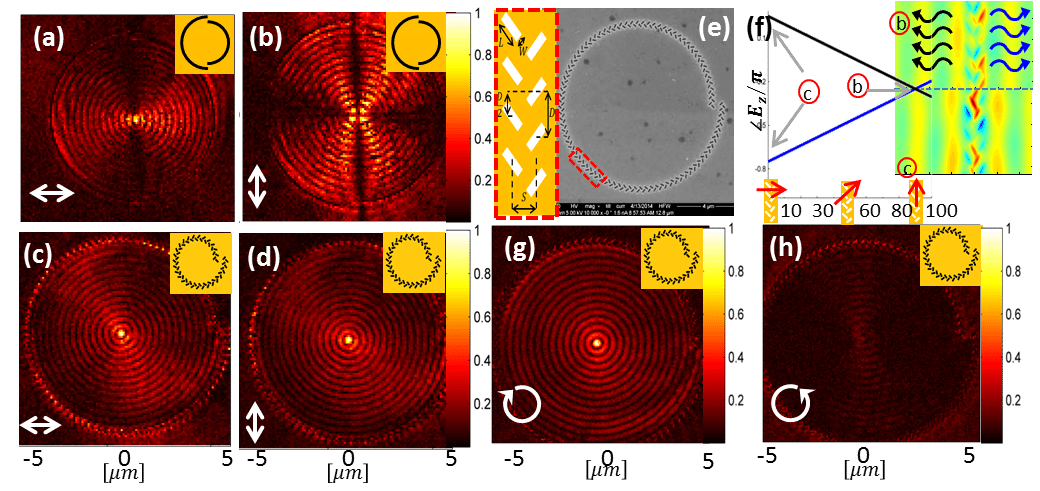
Super Functional Plasmonic Lensing with a Meta-Spiral
A plasmonic lens is formed by shaped boundaries engraved in a metal layer. Excited by vertically impinging light beam, the boundaries launch surface plasmon-polaritons (SPPs) propagating in-plane and combining at a focal point. The goal is focusing the out-of-plane SPP field component, which is by far the dominant SPP field component.
The Archimedes Spiral plasmonic lens (ASPL) focuses impinging light with arbitrary linear polarization, and in addition serves as a selective lens for the proper handedness of a circular polarization (circular dichroic lens). Figure 1 is depicting transverse electric field amplitudes of various lenses, measured by NSOM. The half-circles configuration (Fig 1a,b) serves, as linearly dichroic lens. However, these structures suffer from multiple efficiency problems including temporally-incoherent focal spot, inefficient SPP coupling and loss of half of the energy by SPPs propagating away from the lens. Finally, although the spiral and the half-circles lenses theoretically discriminate between orthogonal polarization states, actual realization with finite size focal point detector will have severe contrast limitation due to the spatial proximity of the major lobes e.g. of Fig.1a to those of 1b.
Here we realized (Fig. 1e) and measured a metasurface based ASPL (MASPL) (Fig. 1c,d,g,h). The slanted slit structure inspired by Lin J. et. al. (Science, 2013) provides the same coupling efficiency for any linearly polarized field orientation. Secondly, for a given linear polarization it introduces a linear angular phase (Fig 1f). Since the “radius” of the Archimedes spiral is also a linear function of the angle – a correct combination of the metasurface and the spiral geometry annihilates the angular dependence resulting in efficient focusing of arbitrary linear polarization (Fig. 1c,d). Due to its chirality, the MASPL retains its selective handedness focusing property but rather with much better efficiency and contrast. The power of the matched circular polarization is directed inwards, while the power of the opposite circular polarization does not penetrate the lens region (Fig. 1g,h), allowing seamless integration with actual detectors.

Powered by Eventact EMS